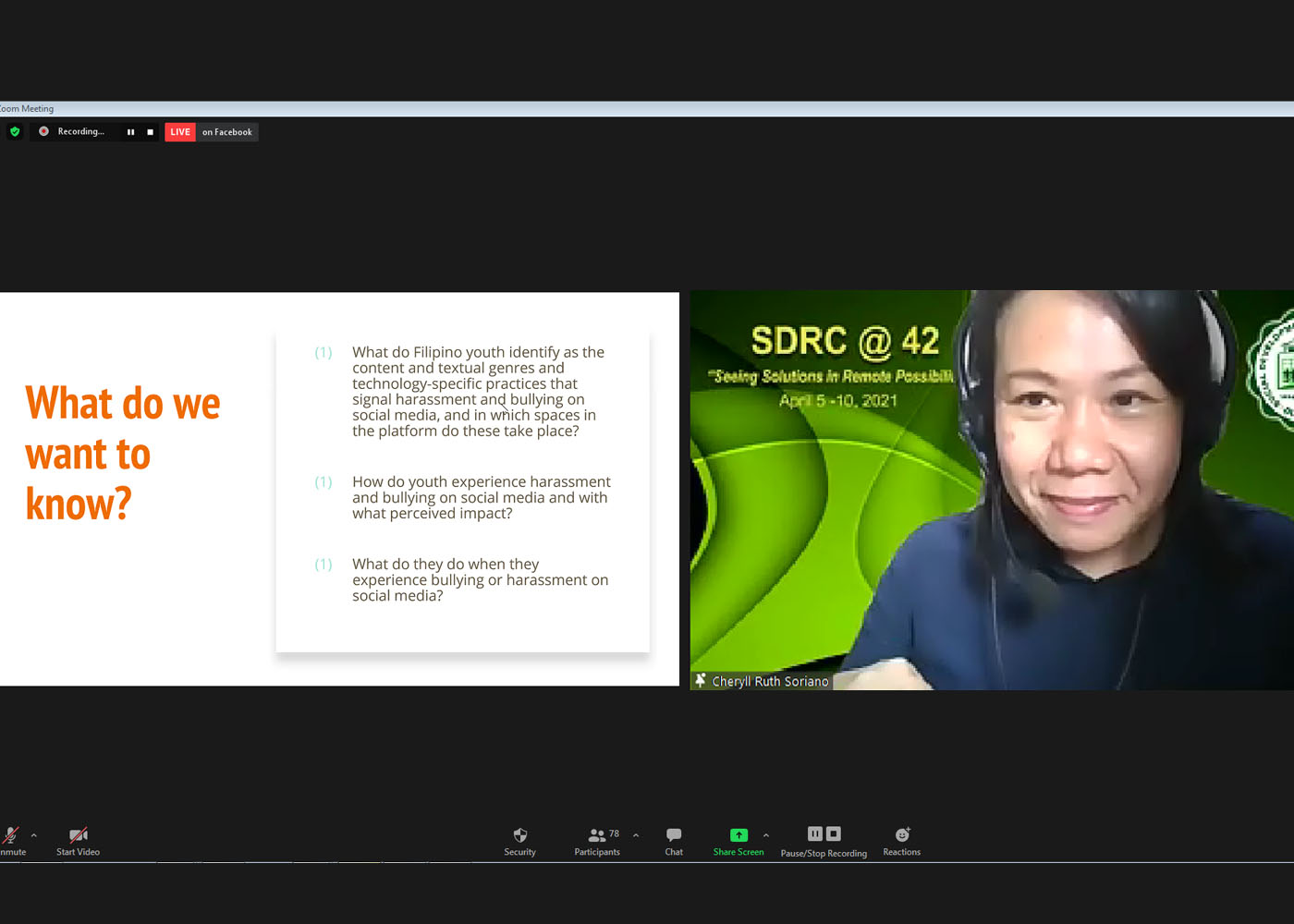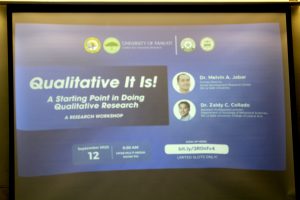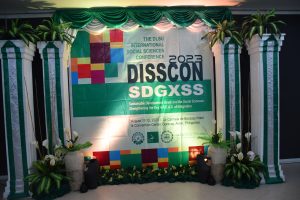It Depends on Who is Looking at It: Talking about How Youth Experience Social Media Bullying and Harassment
“How do you tell the difference between a joke and bullying online?”
This was one of the pertinent questions raised during the “online conversation” between researchers and viewers on the subject “How Filipino Youth Identify and Act on Social Media Bullying and Harassment” held on April 8 as part of the week-long activities commemorating SDRC’s 42nd Anniversary. The presentation was based on a study conceptualized prior to but conducted during the COVID-19 pandemic, with a research team led by Dr. Cheryll Ruth Soriano and comprising co-investigators Dr. Jan Michael Bernadas, Dr. Jason Vincent Cabanes—all from the Department of Communication of the DLSU College of Liberal Arts—and Department of Psychology faculty member and former SDRC Director Dr. Maria Caridad Tarroja, with the assistance of researcher Kaye Mata.
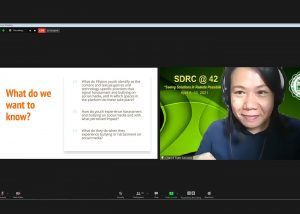 The study sought to determine how Filipino youth identify content and textual genres and technology-specific practices that signal harassment and bullying on social media, and in which spaces on the platform these take place; how youth experience harassment and bullying on social media and with what perceived impact; and what they do when they experience bullying or harassment on social media. The webinar was considered by the team to be a stakeholder consultation, and feedback and comments were intended to be incorporated into the final report.
The study sought to determine how Filipino youth identify content and textual genres and technology-specific practices that signal harassment and bullying on social media, and in which spaces on the platform these take place; how youth experience harassment and bullying on social media and with what perceived impact; and what they do when they experience bullying or harassment on social media. The webinar was considered by the team to be a stakeholder consultation, and feedback and comments were intended to be incorporated into the final report.
In response to the question on a joke and bullying, Dr. Soriano shared that prior to the study, team members were of the notion that these were two different things. However as the investigation progressed, they learned that some respondents saw certain jokes as bullying, even when they might not call this out or react publicly. Peers due to their closeness to each other and proximity of experience can share private knowledge or joke about each other in the public space, sometimes in tune with the playful nature of social media. An example of this can be posting an unfavorable photo of a friend, annotated with a joke. This very exposure of private knowledge about a peer or a photograph, to the public eye—and scalable to known and unknown publics—can be experienced as bullying by some of the youth, depending on their personality characteristics. This was significant in that the study sought to attain a grounded perspective in which bullying was not pre-defined but rather defined by the youth. Of those interviewed, 70 to 80 percent expressed that they had encountered bullying or negative experiences while online.
“How are bullying and harassment defined in this study, and how are they different?”
With a focus on youth as active social media users, and an understanding that research and interventions need to be grounded on their experience, the study involved interviews with 152 respondents aged 15 to 24 years old, 72 being male and 80 female. Participants were selected from Batangas, Metro Manila, Misamis, and Visayas, as these were the areas with the highest number of youth population, as well as where LaSallian schools were located. Extant literature on bullying and harassment and on social media bullying and harassment was likewise reviewed for the study.
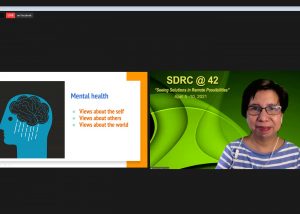 Dr. Tarroja relayed that the data indicated that no clear distinction between bullying and harassment was seen by respondents, although harassment was seen as being “more severe, more threatening—an extreme of online bullying.” In the study, it was established that Filipino youth identify the act of bullying and harassment on social media in terms of perceived impact on the self and others. Differences in whether or how they identify this emerge from technological affordances, relationships, and personal or individual characteristics.
Dr. Tarroja relayed that the data indicated that no clear distinction between bullying and harassment was seen by respondents, although harassment was seen as being “more severe, more threatening—an extreme of online bullying.” In the study, it was established that Filipino youth identify the act of bullying and harassment on social media in terms of perceived impact on the self and others. Differences in whether or how they identify this emerge from technological affordances, relationships, and personal or individual characteristics.
“Do you think social media has become an enabler or a regulator of online bullying?”
The “How Filipino Youth Act and Identify Social Media Bullying and Harassment” study is being conducted with the support of Facebook under its Content Policy Research stream. The Philippines has an estimated 74 million Facebook users, with the largest user group being the youth, and it is hoped that the study will be able to supplement or upgrade community standards policies on the platform in consideration of the perspective of the Filipino youth.
Dr. Soriano explained that social media functions as a facilitator first – it has many affordances such as scalablity, its networked nature, and persistence of content – that allow bullying to happen, and certain acts are only doable on social media. It can be overwhelming for youth since the scale of how many persons are involved in a bullying incident is difficult to determine. On the other hand, social media is also a regulator because there are community standards. If someone feels they are being bullied, they can report this act to an administrator. However, platforms like Facebook will only respond based on how they define these acts. The research team seeks to make these experiences known and better understood for an improved response to negative activity.
“Do you have suggestions on what parents/guardians can do when their kids are bullied on social media but not talking about it?”
The study discusses how bullying and harassment can be done indirectly (e.g. by posting an image or meme on which comments can be made, with such post being shareable and searchable long after the act has been perpetrated) or directly (e.g. by expressing contempt – name calling, trash talking – to an individual, or by public bashing, locally referred to as “kuyog”). How this is received and processed is largely dependent on individual characteristics – on one’s temperament and personality traits.
The role of family and school was cited by Dr. Tarroja as being vital since literature states that many youth would rather not speak up in the event that they are bullied. Red flags such as changes in academic performance can be an indication that bullying is being experienced. Youth can empower themselves by reaching out to older people rather than overthinking about it. Most important to remember is that bullying is not solved by bullying, so victims should “keep the receipts” or secure evidence that they have been targeted.
“I avoid posting on social media because I always feel there will be bad comments and sometimes it’s hard to face people. Is this a good decision?”
The study is premised on the idea that social media has features that are central to how bullying and harassment are done online. Because it is scalable, online communication can range from being private (e.g. via Messenger) to public (e.g. posting on one’s wall), or both. Being networked means that negative activity can also become open to many possible input connections (including those known locally as “nakikisawsaw”) and amplified through platform convergence (e.g. from Facebook to Twitter to Instagram). Likewise, online functions such as sharing, copying and screenshots contribute to a persistent threat of bullying and harassment.
For Dr. Soriano, self-regulation is a choice. When social media is so important because it is a path to social connectedness, it becomes difficult for users not to post. Dr. Tarroja meanwhile conveyed that posting on social media is a way of expressing one’s self. If one constantly thinks there will be bad comments, one will never post. On the other hand, if one posts publicly, it becomes a venue for people to make comments, so one should be prepared to receive feedback. Ultimately, social media users should be aware of “netiquette” or online decorum, and keep in mind that whatever one says can affect other people.


